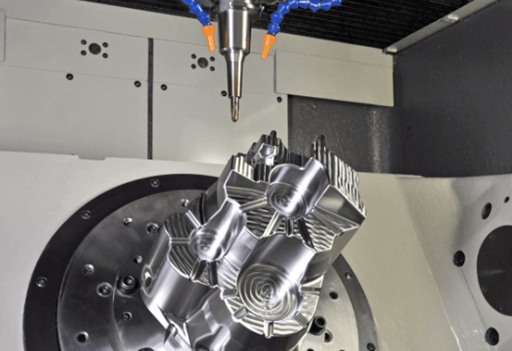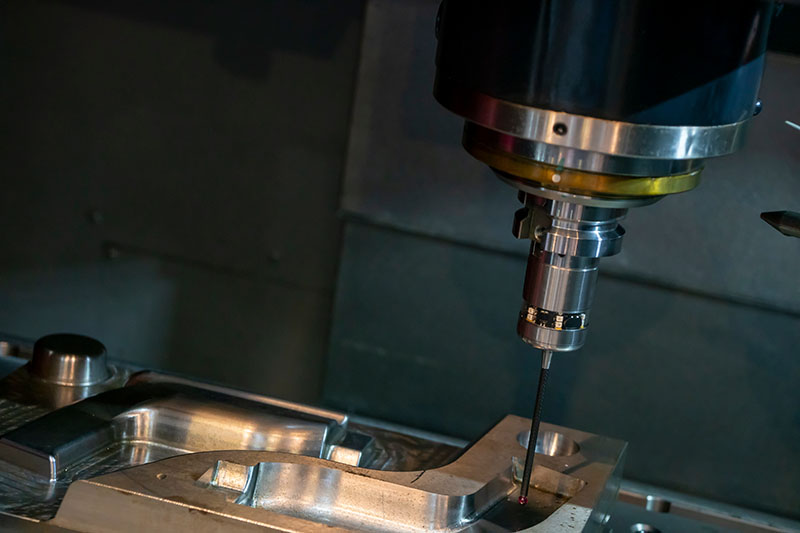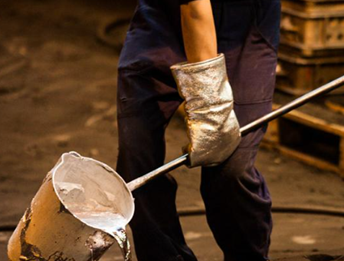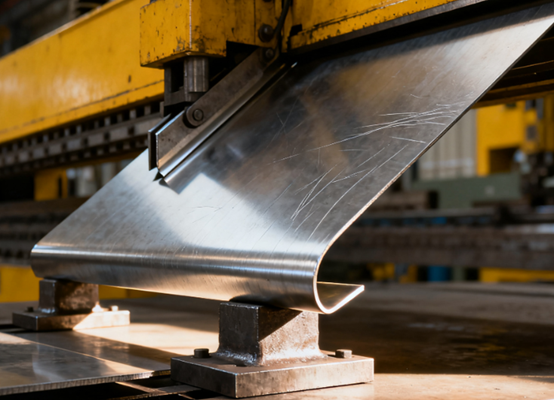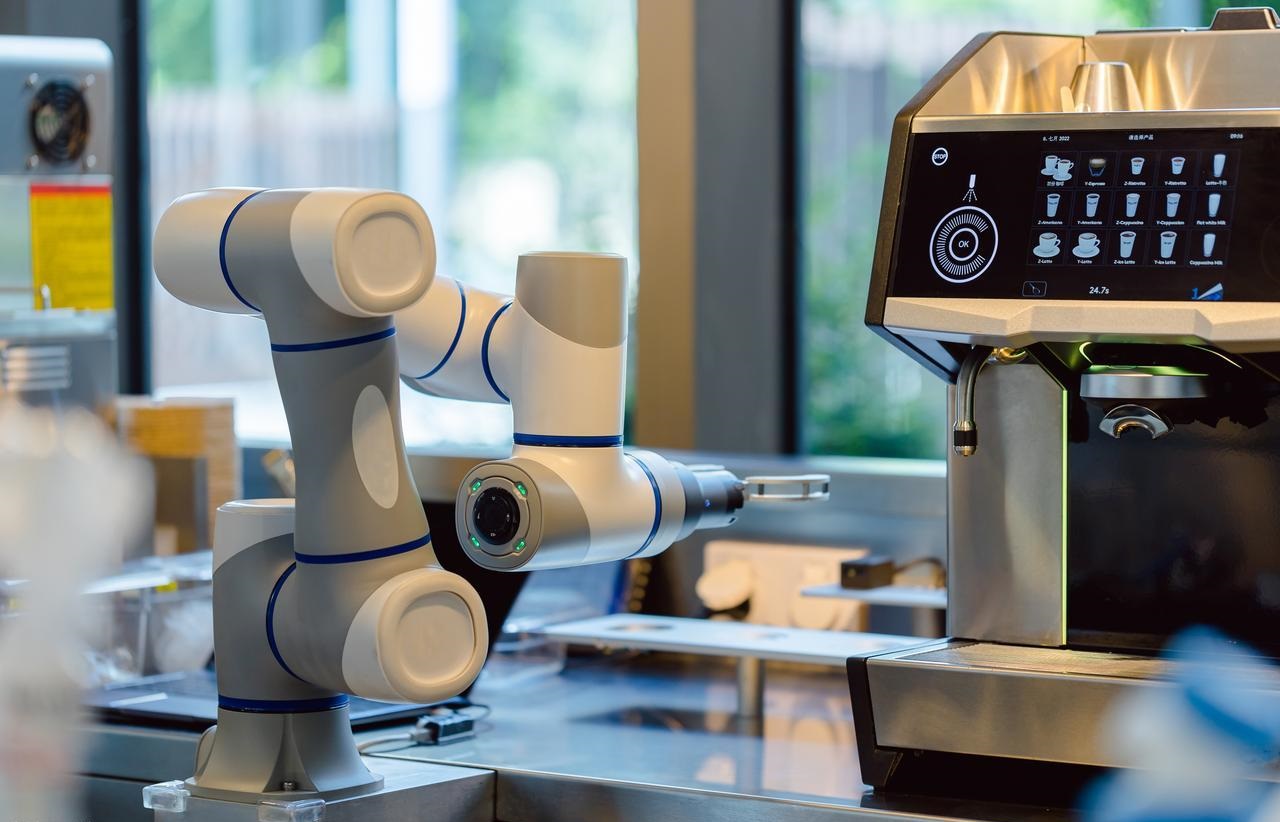Choosing the best cutting method is important for your project. You should think about accuracy, what materials you can use, cost, speed, and edge quality. Many industries, like aerospace and automotive, need these things to meet tough rules. Here is a quick look at how the main choices compare:

| Cutting Method | Accuracy | Material Compatibility | Cost | Speed | Edge Quality |
| Laser Cutting | Very precise | Works best with metals | Costs more at first | Fast for thin things | Smooth edges, no rough spots |
| Precision Waterjet Cutting | Accurate to +/- 0.1 mm or better | Works with metals, glass, stone, and composites | Saves money for thick or mixed materials | Slower for thin, good for thick | Clean edges, no heat problems |
| Plasma Cutting | Good for big pieces | Best for thick steel | Costs less to use | Fastest for thick steel | Edges are rough, needs extra work |
Methods Overview
Precision Waterjet Cutting
Precision waterjet cutting works with almost any material. It uses water under high pressure to cut things. Sometimes, tiny abrasive particles are mixed in. This method does not use heat. Your material stays cool and keeps its shape. You can cut metals, glass, stone, composites, and food.
- The cuts are clean and accurate, even on thick materials.
- There is no burning or melting at the edges.
- It is good for projects needing tight tolerances or special shapes.
Many industries use this method when accuracy is important. Aerospace companies use it for complex parts. Manufacturers use it for custom designs. NOBLE’s Sheet Metal Service uses advanced technology. You can upload CAD files and get quick, reliable results.
Laser Cutting
Laser cutting uses a strong beam of light to cut materials. It melts or vaporizes the material. This method makes very fine, detailed cuts. It works best on thin sheets. You can use it with metals, plastics, wood, and glass. It does not work well with reflective or heat-sensitive materials.
- You get high precision, down to 0.15 mm.
- It is great for making small parts or patterns.
- The process is fast for thin materials.
Laser cutting is used in electronics and medical devices. It is also used for making precision parts. If you need sharp corners or tiny holes, laser cutting is a good choice.
Plasma Cutting
Plasma cutting uses ionized gas called plasma to cut metal. It melts and cuts through materials that conduct electricity. This method works best with metals like steel, aluminum, nickel, and titanium.
- You can cut thick metal sheets quickly.
- It is good for jobs where perfect edges are not needed.
- The process saves money for big, heavy projects.
Plasma cutting is used in shipbuilding and heavy equipment making. It is also used for building with steel. If you need to cut big metal plates fast, plasma cutting works well.
Tip: Each method has its own strengths. Think about your material, how much detail you need, and your budget before you choose.

Comparison Factors
Precision and Accuracy
Precision Waterjet Cutting
You get some of the best accuracy with precision waterjet cutting. This method can hold tight tolerances, often as close as ±0.003 inches. That means your parts come out almost exactly as you designed them. Precision waterjet cutting does not use heat, so your material stays cool and keeps its shape. You do not have to worry about burned edges or melted spots. If you need parts with sharp corners or detailed shapes, waterjet is a great choice.
Here’s a quick look at how waterjet compares to other methods:
| Cutting Method | Precision Tolerance |
| Waterjet Cutting | ±0.003″ |
| Laser Cutting | ±0.005″ to ±0.01″ |
| Plasma Cutting | ~1/32″ |
A few things can affect how accurate your cuts are. The type of material matters. Harder materials or those with no internal tension give you better results. The machine setup is important, too. If the machine sits on a stable surface and uses good controls, you get more precise cuts. Vibrations can mess up the cut, so a steady work area helps a lot.
Laser Cutting
Laser cutting also gives you high precision, usually between ±0.005 and ±0.01 inches. You can make very fine details and small holes. This method works best on thin sheets. If you want sharp lines and smooth edges, laser cutting is a solid pick. However, heat from the laser can sometimes change the edge of your material, especially if it is thin or heat-sensitive.
Plasma Cutting
Plasma cutting is less precise than waterjet or laser. You can expect tolerances around 1/32 inch. This method works well for big, thick pieces where you do not need perfect edges. Plasma cutting uses heat, so you might see some roughness or melted spots on the edges. If you need fast cuts for large metal sheets, plasma is a good option, but it is not the best for detailed work.
Material Range
Precision Waterjet Cutting
You can use precision waterjet cutting on almost any material. It works on metals like steel, aluminum, and titanium. You can also cut glass, stone, composites, and even food. Waterjet does not care if the material is thick or thin. It does not use heat, so it will not damage heat-sensitive materials. This makes it a top choice for projects with mixed materials or special needs.
Laser Cutting
Laser cutting works best on metals and some non-metals like plastics and wood. It is great for thin sheets. If you try to cut thick or reflective materials, like copper, the laser might not work as well. The heat from the laser can also change the edges of some materials.
Plasma Cutting
Plasma cutting is made for metals that conduct electricity. You can cut steel, aluminum, copper, and other metals. It does not work on glass, stone, or plastics. Plasma is best for thick metal plates. If you need to cut non-metal materials, you will need to look at other options.
Here’s a table to help you compare:
| Cutting Method | Materials | Limitations |
| Plasma Cutting | Conductive metals only | Limited to metals, not suitable for non-metals |
| Laser Cutting | Metals and some non-metals | Less effective on thick materials, a heat-affected zone is present |
| Waterjet Cutting | Almost all materials | Slower on thick metals, higher operating costs due to abrasives |
Tip: If you need to cut a wide range of materials, a waterjet is the most flexible choice.
Speed
Precision Waterjet Cutting
Precision waterjet cutting is not the fastest method, but it gives you great quality. It works a bit slower, especially on thick metals. The process takes more time because it uses a stream of water and abrasives to cut. If you care more about clean edges and keeping your material in perfect shape, the extra time is worth it.
Laser Cutting
Laser cutting is quick, especially for thin sheets. You can finish jobs fast when you need lots of small, detailed parts. The speed drops if you try to cut thicker materials, but for most thin metals and plastics, the laser is hard to beat.
Plasma Cutting
Plasma cutting is the fastest way to cut thick metal. You can slice through steel and aluminum in no time. This method is about three to four times faster than precision waterjet cutting. If you have a big job with lots of heavy metal sheets, plasma will save you time and money. Just remember, you might need to clean up the edges after cutting.
| Cutting Method | Best For | Speed | Cost | Quality |
| Plasma Cutting | Thick conductive metals | 3-4 times faster than waterjet | Roughly half the cost per foot | Moderate, requires post-processing |
| Laser Cutting | Thin sheets, fine details | High speed for thin materials | Higher initial investment | High precision, minimal heat distortion |
| Waterjet Cutting | Non-conductive materials, heat-sensitive metals | Slower than plasma and laser | Higher operating costs | Excellent precision, no heat distortion |
Note: Faster cutting can mean rougher edges. If you want the best finish, sometimes it pays to go a little slower.
Cost
Equipment
Cutting machines can be expensive. Plasma cutting machines cost the least. You can buy one for about $7,500. Some plasma tables cost up to $90,000. Laser cutting machines cost much more. Most start at $250,000. Some go up to $500,000. Precision waterjet cutting systems cost about $195,000. Here is a table to compare prices:
| Cutting Technology | Initial Cost Range |
| Plasma Cutting | $7,499 – $90,000 |
| Laser Cutting | $250,000 – $500,000 |
| Waterjet Cutting | ~$195,000 |
Plasma is best if you want to save money. Laser machines are good for clean and detailed cuts. Waterjet machines work with many materials.
Operation
It costs money to run these machines. Plasma cutting is the cheapest, at about $15 per hour. Laser cutting costs around $20 per hour. Precision waterjet cutting costs the most, about $30 per hour. Waterjet machines use special abrasives and lots of water. Here is a table to show the costs:
| Process | Operating Cost |
| Plasma Cutting | Low (~$15/hour) |
| Laser Cutting | High (~$20/hour) |
| Waterjet Cutting | Very High (~$30/hour) |
If you cut a lot, these costs matter. Plasma saves money on big jobs. Laser and waterjet cost more but give better results.
Maintenance
You need to take care of your machines. Plasma cutters are easy to maintain and cost the least. Laser machines need more care, but not too much. Waterjet machines need the most care. They have more moving parts and use abrasives that wear out fast. Here is a table to compare:
| Feature | Plasma Cutting | Laser Cutting | Waterjet Cutting |
| Maintenance Cost | Low | Moderate | High |
Tip: Plasma is best if you want low costs. Waterjet and laser are good if you want top quality and can pay more.
Edge Quality
Precision Waterjet Cutting
Precision waterjet cutting makes smooth edges with no burrs. It uses cold water, so there is no heat damage. Your material will not change shape or warp. The finish is clean, even on thick or brittle materials. Sometimes you may polish for a perfect look. Most cuts are ready to use right away.
Laser Cutting
Laser cutting gives sharp and clean edges. There is very little burr. The laser can leave a small heat-affected zone. This is not a problem for most metals. Thin materials like aluminum get the smoothest finish. Sometimes you need to remove a little roughness. The edge is usually ready to use.
Plasma Cutting
Plasma cutting works fast but makes rougher edges. You see more burrs and a bigger heat-affected zone. The cut edge may need extra grinding or sanding. Plasma is good for quick jobs when perfect edges are not needed.
Here is a table to compare edge quality:
| Cutting Method | Burr Formation | Heat-Affected Zone | Surface Finish (Ra) |
| Laser Cutting | Minimal | Minimal | 3-12 μm |
| Waterjet Cutting | Low | None | Smooth |
| Plasma Cutting | High | High | Rough |
Note: Waterjet gives the best edge with no heat damage. Laser is almost as good. Plasma needs more cleanup.
Safety and Environment
Precision Waterjet Cutting
Precision waterjet cutting is safe if you follow the rules. The biggest risk is the high-pressure water stream. Always wear protective gear and keep your hands away. Waterjet machines do not make fumes or toxic gases. They use less energy than laser or plasma machines. Waste is mostly water and abrasive. You can recycle or safely throw it away. Precision waterjet cutting is good for the environment.
Laser Cutting
Laser cutting has some safety risks. The laser beam can hurt eyes or skin. Wear special glasses and keep the machine covered. Laser cutting makes fumes and gases. You need good ventilation. Some lasers use a lot of power. This can raise energy bills and carbon footprint. Fiber lasers use less energy than CO2 lasers. Both need careful handling.
Plasma Cutting
Plasma cutting makes bright light, heat, and loud noise. Wear eye and ear protection. The process makes fumes that can be harmful. You need good ventilation. Plasma machines use a lot of energy and produce more waste. Always follow safety rules to protect yourself and the environment.
Here is a table to show safety risks and how to stay safe:
| Cutting Method | Primary Safety Risks | Mitigation Measures |
| Waterjet Cutting | High-pressure water can cause injuries | Wear protective gear, and regular equipment checks |
| Laser Cutting | Fumes, risk of burns or blindness, fire hazards | Use ventilation, protective eyewear, and machine covers |
| Plasma Cutting | Fumes, intense light, high noise, burns | Ventilation, protective gear, and hearing protection |
Tip: Always follow safety rules. Precision waterjet cutting is clean for the environment. It does not make fumes or heat.

Pros and Cons
Precision Waterjet Cutting
When you look at precision waterjet cutting, you see a lot of benefits. You can cut almost any material, from metal to glass. You do not have to worry about heat changing your parts. The edges stay smooth, and you get high precision. You can make intricate shapes and tight corners. This method works well for projects that need accuracy and clean finishes.
Pros:
- No heat-affected zone, so your material stays strong.
- High precision for detailed cuts.
- Works with many materials, including metals, stone, and composites.
- Safer than thermal methods because it does not make toxic fumes.
- Easy to learn and use.
Cons:
- Slower production rate, especially for thick materials.
- Higher operating costs due to abrasives and maintenance.
- Loud noise from the waterjet pumps.
If you want the best finish and need to cut heat-sensitive materials, precision waterjet cutting is a top choice. You get clean results, but you may spend more time and money.
Laser Cutting
Laser cutting gives you speed and accuracy. You can cut thin sheets fast and make sharp corners. The process works well for metals and some plastics. You get smooth edges with very little cleanup needed. Laser cutting is popular in electronics and medical device manufacturing.
Pros:
- Very high precision, great for small parts.
- Fast cutting speeds, especially for thin materials.
- Minimal kerf width, so you waste less material.
- Quieter than a waterjet, but ventilation systems can make noise.
Cons:
- Not ideal for reflective metals like copper.
- Slower on thick materials.
- A steeper learning curve because you need to adjust many settings.
- Needs special safety gear for eyes and skin.
Laser cutting helps you finish jobs quickly and with great detail. You need to watch out for heat effects on some materials.
Plasma Cutting
Plasma cutting is all about speed. You can cut thick metal sheets in no time. This method works best for steel and other conductive metals. You do not need to spend much on equipment or maintenance. Plasma cutting is common in shipbuilding and heavy equipment work.
Pros:
- Fastest cutting method for thick metals.
- Equipment costs less than laser or waterjet.
- Easy to learn and automate.
- Good for large projects with big metal plates.
Cons:
- Only works on conductive materials.
- Less precise than waterjet or laser.
- Edges may be rough and need extra finishing.
- Makes bright light and fumes, so you need good ventilation.
Plasma cutting saves you time and money for big jobs. You may need to clean up the edges after cutting.
Here’s a quick table to help you compare:
| Feature | Waterjet | Laser | Plasma |
| Production Rate | Slowest for thick | Fast for thin | Fastest overall |
| Precision | High (±0.005″) | Very high (±0.002″) | Moderate (±0.020″) |
| Cut Quality | Best, no heat | Excellent, minimal dross | Good, heat impact |
Tip: Choose the method that fits your project’s needs. Think about speed, cost, and the type of material you want to cut.

Precision Waterjet Cutting Use Cases
When to Choose Precision Waterjet Cutting
Pick precision waterjet cutting if you want the best edges. This method keeps your material just like it was before. It works well for thick pieces and for things that do not like heat, like glass, stone, or rubber. Waterjet is great for cutting shiny metals or non-metals. It is also good for jobs that need tight fits and smooth finishes.
Here are some times when a waterjet is the best:
- You want no heat damage or warping at all.
- You need to cut thick or layered materials.
- Your project uses heat-sensitive or shiny materials.
- You want the smoothest edge possible.
- You need to cut non-metals like ceramics, foam, or composites.
Many industries use precision waterjet cutting for these reasons. In aerospace, you might cut titanium or Inconel® for landing gear or engine parts. In cars, you can cut frames, bumpers, carpets, or insulation. Medical device makers use waterjet for custom parts that must stay strong and clean. NOBLE’s Sheet Metal Precision Waterjet Cutting Service helps you get parts fast and with high quality.
| Industry | Typical Applications |
| Aerospace | Landing gear, brake parts, aircraft bodies, engine parts (aluminum, brass, Inconel®, titanium) |
| Automotive | Frames, carpets, insulation, linings, bumpers |
| Defense | Armor plating, bulletproof glass, and explosives |
| Electronics | Circuit boards, insulation (metal, plastic, foam) |
Tip: If you want your material to stay the same, waterjet is the best choice.
When to Choose Laser Cutting
Laser cutting is best for fast, detailed cuts on thin materials. Pick a laser if you want sharp corners, small holes, or tricky shapes. Laser cutters work well with metals and many plastics. You can change designs quickly, which helps if you need many custom parts.
Here is why you might pick laser cutting:
- You want high precision for small details.
- You need to make many of the same parts fast.
- You work with thin sheets of metal or plastic.
- You want to change designs without slowing down.
- You want a clean edge with little extra work.
Laser cutting is popular in electronics and medical device making. You can use it for circuit boards, small gears, or custom brackets. The process is quick and keeps your work moving.
| Advantage | Description |
| Precision | Fine cuts and tricky shapes |
| Customization | Quick design changes |
| Efficiency | Consistent, repeatable results |
| Versatility | Cuts metals and plastics |
When to Choose Plasma Cutting
Plasma cutting is best for thick, conductive metals when you want speed and low cost. Use plasma if you need to cut big steel plates or heavy parts fast. This method is good for big jobs in building, ship work, or fixing heavy equipment.
You might pick plasma cutting because:
- You want to finish big jobs quickly.
- You need to save money on machines and running costs.
- You work mostly with steel, aluminum, or other conductive metals.
- You do not need perfect edges and can clean up after cutting.
Plasma cutting tables cost less than waterjet or laser machines. You can start with less money and still do tough jobs. Heavy industry often picks plasma for its speed and value.
Note: Plasma is ideal for working with thick metals and high-speed operations, but it is not the best choice for fine details or non-metallic materials.
Decision Guide
Choosing the Right Method
Key Factors
You want to pick the best cutting method for your project, but it can feel tricky. Let’s break down what matters most. Start by thinking about your material. Is it metal, glass, or something else? Some methods work better with certain materials. Thickness is another big deal. Thin sheets and thick plates need different tools.
Precision matters if you need parts that fit together perfectly. Precision waterjet cutting gives you extremely high accuracy, down to ±0.001 inches. Laser cutting is also precise, but plasma is better for jobs where you don’t need perfect edges.
Production volume can change your choice. If you need lots of parts fast, speed and cost become more important. Plasma and laser cut quickly, while waterjet takes more time but gives you cleaner results. Design complexity is another thing to think about. If your parts have lots of curves or tiny details, waterjet and laser handle those shapes better than plasma.
Here’s a table to help you see what matters most:
| Factor | Why It Matters |
| Material Type | Some methods only work with certain materials. |
| Thickness | Thicker parts need stronger cutting methods. |
| Precision | Tight tolerances mean you need high accuracy. |
| Production Volume | More parts mean you need faster, cost-effective cutting. |
| Design Complexity | Intricate shapes need advanced cutting technology. |
Tip: Think about your budget, too. Advanced machines like waterjet and laser cost more upfront, but they give you better results for complex jobs. Plasma is cheaper and works well for big, simple cuts.
Quick Reference
You want a fast way to compare your options. Check out this table for a quick look at costs:
| Process | Initial Cost | Operating Cost | Maintenance Cost |
| Laser Cutting | High | High | Low |
| Plasma Cutting | Low | Low | Low |
| Waterjet Cutting | High | Very high | High |
If you need to cut thick plates of steel or aluminum and want to save money, plasma cutting is your best bet. Precision waterjet cuttingworks great for heat-sensitive materials and is friendly to the environment. Laser cutting gives you sharp, detailed parts, but you need to watch out for fumes and higher costs.
Here’s a quick list to help you decide:
- Waterjet: No heat, best for mixed or thick materials, highest precision.
- Laser: Fast, clean edges, great for detailed designs.
- Plasma: Fastest for thick metals, lowest cost, good for heavy industry.
Note: You don’t have to choose alone. Think about your project’s needs, your budget, and the finish you want. If you still feel unsure, talk to a cutting expert. You’ll get advice that fits your job and helps you get the best results.
There are many things to think about when you choose a cutting method. Waterjet, laser, and plasma all have their own special benefits. Look at this table to help you decide what works for your project:
| Cutting Technology | Best For |
| Waterjet Cutting | Non-conductive materials, heat-sensitive metals, thick parts |
| Plasma Cutting | Thinner metals, fast jobs |
| Laser Cutting | High precision, thin materials, detailed designs |
Lately, precision waterjet cutting gives cleaner cuts and can be used in more ways. Lasers and plasmas are getting quicker and more accurate. Think about what material you have, how fast you need the job done, and how much you want to spend. If you are not sure, you can ask a cutting expert for help.

Choose NOBLE For Best Precision Waterjet Cutting
From design to prototyping to production, we are ready to turn your ideas into reality with advanced manufacturing solutions tailored to your product. Choosing us for precision waterjet cutting means working with a team that values precision, reliability, and innovation. Here are the reasons why we are the ideal choice for your cutting needs:
Rapid Prototyping Capabilities
Precision waterjet cutting is ideal for rapid prototyping. Without tooling, we can quickly produce prototypes, enabling rapid iterations and design changes. This speed is critical for industries with tight time-to-market requirements.
Expertise and Experience
With years of experience in precision waterjet cutting, we have completed thousands of projects across a variety of industries. Our expertise in materials and sheet metal cutting technology enables us to provide tailored solutions for prototyping, low-volume production, or custom designs.
Precision and Accuracy
We provide precision waterjet cutting with tolerances of ±0.005 inches (0.13 mm), ensuring a perfect fit and design accuracy. This precision is critical for complex designs, intricate geometries, and high-precision parts in the aerospace, automotive, and medical industries.
Fast Turnaround Times
Our efficient workflow and advanced technology ensure timely project completion. Whether rapid prototyping or high-volume production, we reduce lead times and deliver high-quality sheet metal cutting parts quickly.
Sheet Metal Waterjet Cutting Standards
Check out our over a decade of precision custom sheet metal machined parts, including precision waterjet cutting prototypes and precision waterjet cutting parts from our valued customers.
| Dimension Detail | Tolerance |
| Edge to Edge, Single Surface | +/- 0.010″ |
| Edge to Hole, Single Surface | +/- 0.010″ |
| Hole to Hole, Single Surface | +/- 0.010″ |
| Hole Diameter, Single Surface | +/- 0.010″ |
| Bend to Edge / Hole, Single Surface | +/- 0.010″ |
| Edge to Feature, Multiple Surface | +/- 0.030″ |
| Overformed Part, Multiple Surface | +/- 0.030″ |
| Bend Angle | +/- 1 deg |
FAQs of Waterjet Cutting
What materials can you cut with a waterjet?
You can cut almost anything with a waterjet. Metals, glass, stone, rubber, and even food work well. Precision waterjet cutting does not care if your material is thick or thin.
Does precision waterjet cutting change the material?
No, precision waterjet cutting keeps your material cool. You will not see any burns, warping, or melted spots. Your part stays just like you designed it.
How fast is precision waterjet cutting compared to laser or plasma?
Precision waterjet cutting works more slowly than plasma and laser, especially on thick metals. You get a cleaner edge, but you may wait a bit longer for your parts.
Is precision waterjet cutting safe for the environment?
Yes! Waterjet cutting does not make toxic fumes or use lots of energy. Most waste is water and sand, which you can recycle or throw away safely.
What is the edge quality like with precision waterjet cutting?
You get a smooth, clean edge with precision waterjet cutting. There are no burrs or heat marks. Most parts need little or no extra finishing.
Can you use precision waterjet cutting for custom shapes?
Absolutely! Precision waterjet cutting handles complex designs and tight corners. You can upload your CAD file and get almost any shape you want.
How do I get a quote from NOBLE?
Just upload your CAD file to NOBLE’s website. You get an instant quote and expert advice. The process is quick and easy.
Which cutting method should I choose for my project?
Think about your material, thickness, and how precise you need your parts. Waterjet works best for mixed or heat-sensitive materials. A laser is great for thin, detailed parts. Plasma is fastest for thick metals.


